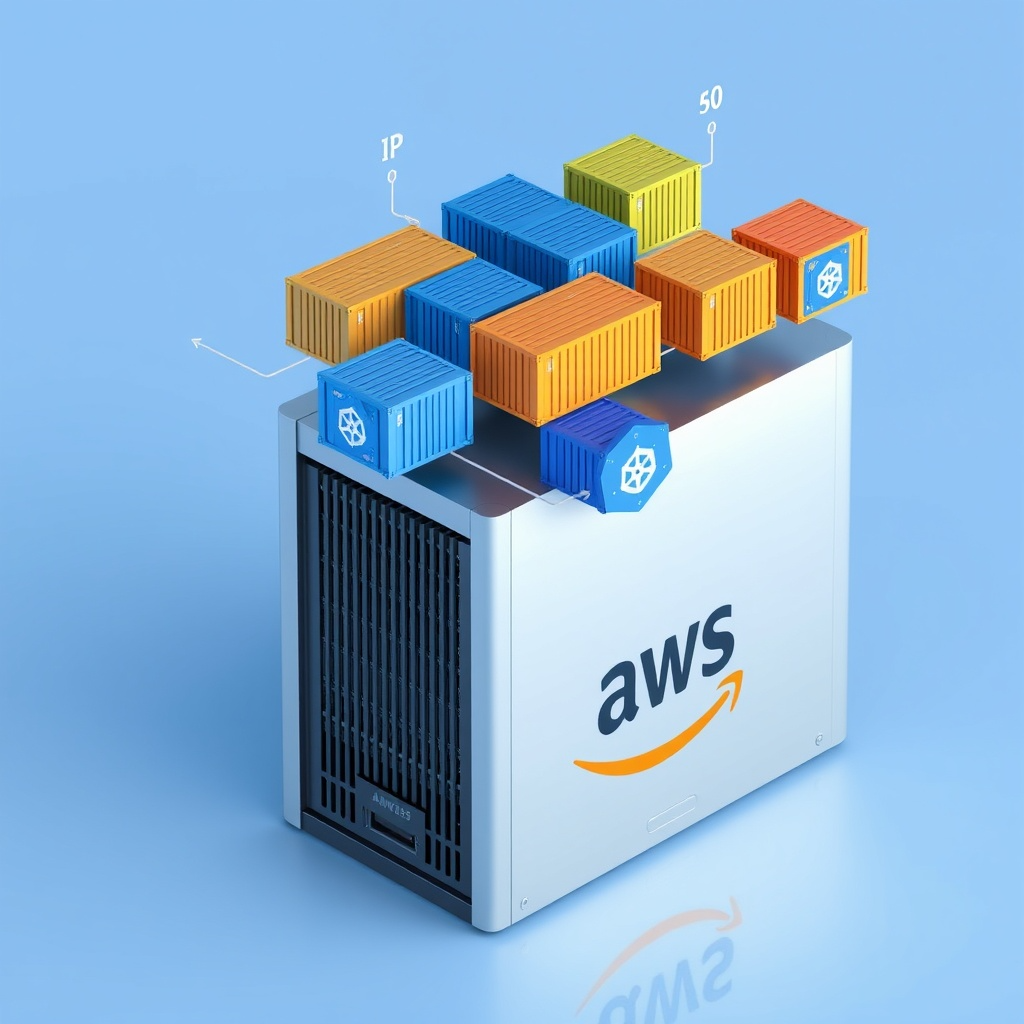
Imagine building a house of cards. One slight bump and the whole structure comes tumbling down. Now, imagine if your AWS infrastructure was like that house of cards, a scary thought, right? That’s exactly what happens when we have single points of failure in our cloud architecture.
We’re setting ourselves up for trouble when we build systems that depend on a single critical component. If that component fails, the entire system can come crashing down like the house of cards. Instead, we want our infrastructure to resemble a well-engineered skyscraper: stable, robust, and designed with the foresight that no one piece can bring everything down. By thinking ahead and using the right tools, we can build systems that are resilient, adaptable, and ready for anything.
Why should you care about high availability?
Let me start with a story. A few years ago, a major e-commerce company lost millions in revenue when its primary database server crashed during Black Friday. The problem? They had no redundancy in place. It was like trying to cross a river with just one bridge, when that bridge failed, they were completely stuck. In the cloud era, having a single point of failure isn’t just risky, it’s entirely avoidable.
AWS provides us with incredible tools to build resilient systems, kind of like having multiple bridges, boats, and even helicopters to cross that river. Let’s explore how to use these tools effectively.
Starting at the edge with DNS and content delivery
Think of DNS as the reception desk of your application. AWS Route 53, its DNS service, is like having multiple receptionists who know exactly where to direct your visitors, even if one of them takes a break. Here’s how to make it bulletproof:
- Health checks: Route 53 constantly monitors your endpoints, like a vigilant security guard. If something goes wrong, it automatically redirects traffic to healthy resources.
- Multiple routing policies: You can set up different routing rules based on:
- Geolocation: Direct users based on their location.
- Latency: Route traffic to the endpoint that provides the lowest latency.
- Failover: Automatically direct users to a backup endpoint if the primary one fails.
- Application recovery controller: Think of this as your disaster recovery command center. It manages complex failover scenarios automatically, giving you the control needed to respond effectively.
But we can make things even better. CloudFront, AWS’s content delivery network, acts like having local stores in every neighborhood instead of one central warehouse. This ensures users get data from the closest location, reducing latency. Add AWS Shield and WAF, and you’ve got bouncers at every door, protecting against DDoS attacks and malicious traffic.
The load balancing dance
Load balancers are like traffic cops directing cars at a busy intersection. The key is choosing the right one:
- Application Load Balancer (ALB): Ideal for HTTP/HTTPS traffic, like a sophisticated traffic controller that knows where each type of vehicle needs to go.
- Network Load Balancer (NLB): When you need ultra-high performance and static IP addresses, think of it as an express lane for your traffic, ideal for low-latency use cases.
- Cross-Zone Load Balancing: This is a feature of both Application Load Balancers (ALB) and Network Load Balancers (NLB). It ensures that even if one availability zone is busier than others, the traffic gets distributed evenly like a good parent sharing cookies equally among children.
The art of auto scaling
Auto Scaling Groups (ASG) are like having a smart hiring manager who knows exactly when to bring in more help and when to reduce staff. Here’s how to make them work effectively:
- Multiple Availability Zones: Never put all your eggs in one basket. Spread your instances across different AZs to avoid single points of failure.
- Launch Templates: Think of these as detailed job descriptions for your instances. They ensure consistency in the configuration of your resources and make it easy to replicate settings whenever needed.
- Scaling Policies: Use CloudWatch alarms to trigger scaling actions based on metrics like CPU usage or request count. For instance, if CPU utilization exceeds 70%, you can automatically add more instances to handle the increased load. This type of setup is known as a Tracking Policy, where scaling actions are determined by monitoring key metrics like CPU utilization.
The backend symphony
Your backend layer needs to be as resilient as the front end. Here’s how to achieve that:
- Stateless design: Each server should be like a replaceable worker, able to handle any task without needing to remember previous interactions. Stateless servers make scaling easier and ensure that no single instance becomes critical.
- Caching strategy: ElastiCache acts like a team’s shared notebook, frequently needed information is always at hand. This reduces the load on your databases and improves response times.
- Message queuing: Services like SQS and MSK ensure that if one part of your system gets overwhelmed, messages wait patiently in line instead of getting lost. This decouples your components, making the whole system more resilient.
The data layer foundation
Your data layer is like the foundation of a building, it needs to be rock solid. Here’s how to achieve that:
- RDS Multi-AZ: Your database gets a perfect clone in another availability zone, ready to take over in milliseconds if needed. This provides fault tolerance for critical data.
- DynamoDB Global tables: Think of these as synchronized notebooks in different offices around the world. They allow you to read and write data across regions, providing low-latency access and redundancy.
- Aurora Global Database: Imagine having multiple synchronized libraries across different continents. With Aurora, you get global resilience with fast failover capabilities that ensure continuity even during regional outages.
Monitoring and management
You need eyes and ears everywhere in your infrastructure. Here’s how to set that up:
- AWS Systems Manager: This serves as your central command center for configuration management, enabling you to automate operational tasks across your AWS resources.
- CloudWatch: It’s your all-seeing eye for monitoring and alerting. Set alarms for resource usage, errors, and performance metrics to get notified before small issues escalate.
- AWS Config: It’s like having a compliance officer, constantly checking that everything in your environment follows the rules and best practices. By the way, Have you wondered how to configure AWS Config if you need to apply its rules across an infrastructure spread over multiple regions? We’ll cover that in another article.
Best practices and common pitfalls
Here are some golden rules to live by:
- Regular testing: Don’t wait for a real disaster to test your failover mechanisms. Conduct frequent disaster recovery drills to ensure that your systems and teams are ready for anything.
- Documentation: Keep clear runbooks, they’re like instruction manuals for your infrastructure, detailing how to respond to incidents and maintain uptime.
- Avoid these common mistakes:
- Forgetting to test failover procedures
- Neglecting to monitor all components, especially those that may seem trivial
- Assuming that AWS services alone guarantee high availability, resilience requires thoughtful architecture
In a Few Words
Building a truly resilient AWS infrastructure is like conducting an orchestra, every component needs to play its part perfectly. But with careful planning and the right use of AWS services, you can create a system that stays running even when things go wrong.
The goal isn’t just to eliminate single points of failure, it’s to build an infrastructure so resilient that your users never even notice when something goes wrong. Because the best high-availability system is one that makes downtime invisible.
Ready to start building your bulletproof infrastructure? Start with one component at a time, test thoroughly, and gradually build up to a fully resilient system. Your future self (and your users) will thank you for it.
Route 53 --> Alias Record --> External Load Balancer --> ASG (Front Layer)
| |
v v
CloudFront Internal Load Balancer
| |
v v
AWS Shield + WAF ASG (Back Layer)
|
v
Database (Multi-AZ) or
DynamoDB Global









